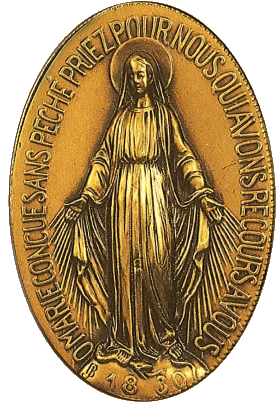
CJS.Org Introductory Remarks:
This account of the Apparition of Our Lady in the Rue du Bac Paris is taken from The Blessed Virgin in the Nineteenth Century: Apparitions, Revelations, Graces by Bernard St John, published in 1903.
As we explained here, we have been so taken with this old out-of-copyright book that we hope at some point to reprint it (probably with additional commentary from myself).
In the meantime, however, we plan to offer a series of extracts from St. John’s book here in our Archives devoted mainly to older out-of-copyright material, which we find illumining.
The extracts will be to do with the great approved Marian Apparitions in Nineteenth Century France.
And this extract focusses on the first series of these in 1830 – those which led to the Miraculous Medal being struck and distributed by the millions across the world.
Here is a major phenomenon – nay, miracle! – of Nineteenth Century Catholicism that deserves to be restored to the collective awareness of the Twenty First Century.
It should be noted that the text has been very slightly edited for reasons indicated in a postscript below.
It should also be noted perhaps, that the author’s perspective was very common amongst Catholics in 1903. Bernard St John sees the plague of unbelief that took hold of the Nineteenth Century enamoured of rationalism – and he is very much writing of the great Marian Apparitions as a healing response to the darkness of the epoch. – RB
From Bernard St John:
And, on looking back from the beginning of the twentieth century across the period thus begun in 1830, we see the religious atmosphere of the time illumined by an occasional rift in the clouds in the shape of an Apparition or series of Apparitions. La Salette and Lourdes will at once present themselves to the reader’s mind …
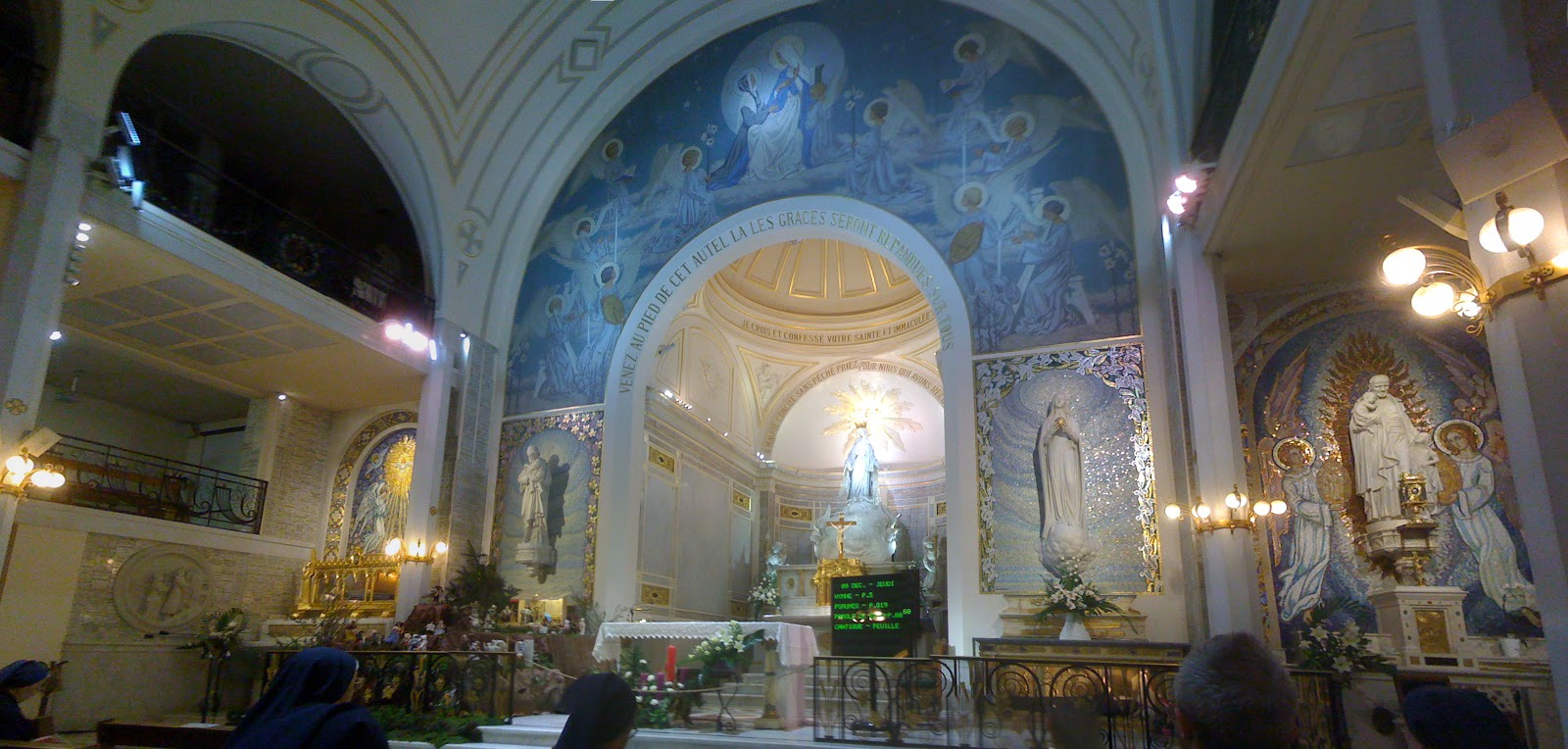
The supernatural has been asserting itself boldly in the face of science and unbelief.
With this, the figure of the Virgin Mother has come into more vivid prominence than perhaps at any previous time, if we except that of St. Bernard.
Yes, the Nineteenth Century has with truth been called “Mary’s century” (Le siecle de Marie).
Has not the whole period we are considering been spanned by the radiance of a single dogma that of her Immaculate Conception?
This dogma was told in letters of gold to St. Catherine Labouré; it was told by the infallible voice of Rome in 1854; it was told to the child Bernadette at the Lourdes grotto.
We go back to 1830, and to the period that, in a religious sense, was then opened by the revelation of the Medal of the Immaculate Conception to St. Catherine Labouré.
She who was thus the favoured recipient of a divine message was, at the time of which we write, a novice of the mother-house of the Filles de la Charité, of the Rue du Bac.
But we have glimpses of her before this as Zoe Labouré, a motherless girl, with the blood of a Burgundy peasant in her veins, and acting as her father s right hand.
It will be well for the reader to make acquaintance with her at this early period. Zoe acted a mother’s part towards a younger sister, and was efficient in all that pertained to a farmhouse and poultry yard …
While attending to farm and domestic duties, she gave every proof of being solidly pious. At the same time, she showed signs of a resolute will, and a somewhat quick temper.
By the time she was eighteen she had refused more than one suitor, saying: “I am affianced to Jesus, and will have no other spouse than Him.”
The Dream of St. Vincent of Paul
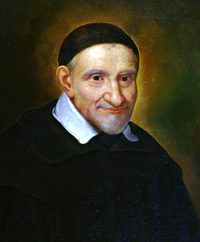
A dream she had about this time seems to have had some weight in causing her to decide upon entering the congregation of the Filles de la Charité.
The dream was as follows: She was in a side chapel of her parish church, when she suddenly saw an aged priest appear.
The priest began to put on vestments preparatorily to offering the Holy Sacrifice. She assisted at the Mass that followed. When it was over, the priest made a sign to her to follow him.
Instead of doing so she withdrew, walking backwards, but without taking her eyes from him who had thus signed to her.
On leaving the church she stopped to make a sick call in the village, and again met the venerable old man.
He accosted her thus : “You do well, my child, to visit the sick. You try to avoid me now, but some day you will be glad to come to me. Do not forget that God has designs on you.”
Zoe still drew back, stupified and frightened. She awoke to find the whole thing a dream. It was a dream, however, that continued to haunt her.
Sometime afterwards, being on a visit at the house of a relative at Chatillon-sur-Seine, she was taken one day to the community of the Filles de la Charité there. The first thing she saw on entering the parlour was a portrait of a priest exactly resembling the old man of her dream.
She asked whose portrait it was, and was told that it was that of St. Vincent of Paul.
Zoe Labouré thought she understood the dream, and the future seemed to unfold before her. She was no longer in doubt as to what religious order or congregation to enter.
Not long afterwards we find her in Paris, a novice at the mother-house of the Filles de la Charité.
This was in 1830. Zoe, to be known henceforth as St. Catherine Labouré, was then twenty-one years of age, and so unlettered that she could neither read nor write.
Alluding later on to her ignorance in this respect, she was wont to say: “It was after entering the community that I learnt what I know.”
Here commenced for her a course of remarkable spiritual experiences, among which must be numbered her frequent visions with the eye of sense of our Lord in His sacramental Presence. Here, too, commenced that remarkable series of visions with which her name is associated.
Foreword for Monarchy by Roger Buck
The First Visit of the Weeping Lady: ‘The Cross will be Despised and Overthrown’
We are on the 18th July, 1830, the [vigil of the] Feast of Saint Vincent of Paul. It was about eleven o’clock at night.
St. Catherine was in the chapel, while the rest of the community were in bed and asleep …
According to her account, she heard a slight rustling sound, and then saw a female figure of exceeding beauty come and take a seat on the left side of the sanctuary.
Her first feelings of hesitation over, she fell on her knees before and close to the beauteous figure.
She afterwards described this vision to her confessor, M. Aladel, who was at that time the spiritual director of the community. Later on it was committed by her to writing as an act of obedience.
In her account she says: “At that moment, which it would be impossible for me to describe, was the happiest I had known. The Blessed Virgin told me how to act when I was in trouble.
Pointing with her left hand to the altar, she told me to throw myself before it, and there to pour out my soul in prayer, adding that by that means I should receive all the consolation I needed.
Then she said to me: “My child, I am going to entrust you with a mission. It will cause you suffering, but you will be sustained by the thought that it is all for the glory of God.
You will meet with opposition, but do not fear, for grace will be given you. Tell simply and without fear what takes place within you. You will see certain things; you will be inspired in your prayers. Give an account of all this to him who has charge of your soul.”
I then asked the Blessed Virgin to explain to me the things I had seen.
Here the novice alludes no doubt to certain previous visions she had had, and principally in connection with St. Vincent of Paul.
The heavenly visitant replied: “My child, the times are evil; troubles are about to come upon France; the monarchy will be overthrown; and the whole world will be upheaved by misfortunes of every kind.
But come to the foot of this altar, for there graces will be showered on all who come, be these great or lowly. At a certain moment, the danger will be great and things will seem to be at their worst. Fear not, for I shall be with you.
You will be conscious of my presence and of God’s protection and of that of St. Vincent of Paul watching over his two communities. Do not be afraid, and never lose courage, for I shall be with you.
There will be victims in other communities. [Here, according to the recital, the Blessed Virgin shed tears.] There will be victims among the Paris clergy. The Archbishop will die.
My child, the cross will be despised and overthrown and men will open our Lord’s side afresh, and the whole world will be in trouble.”
“When will all this happen?” asked the novice within herself, and an interior voice answered: “In forty years time.”
Reader, we have only to travel in thought from 1830 to Paris in 1870-71 to see the fulfilment of the last portion of this midnight prophecy.
[Note: in the spring of 1871, there was a revolutionary uprising in Paris called the commune. The Archbishop of Paris was rounded up and shot by the commune – RB.]

When the voyante gave an account of this vision to her director, he, for wise reasons of his own, appeared to treat her communications lightly, while in reality, attaching all the importance to them they deserved, and making notes of them in writing. The matter of these communications was in 1856 committed to paper by St. Catherine at M. Aladel’s request.
Now that more than seventy years have passed we are able to see this vision in its true light. It served as a prelude to two others that were to follow, revealing the now famous medal of the Immaculate Conception.
Although St. Catherine had been told by her spiritual director to let her mind dwell as little as possible on what she had seen and heard, and although she did her best to obey in the matter, yet she could not prevent her thoughts from reverting frequently to what she felt to be a delightful reality.
The Vision of the Miraculous Medal
On the 17th of the November following, and at about half-past five in the afternoon, the novice was alone in the chapel intent on her evening meditation.
Hearing “a slight sound, she looked up and saw on the right side of the sanctuary the figure that had rivetted her gaze in the midnight vision four months before. It was, however, differently clothed.
The figure was of middle height, and the face of a beauty that defied description. The veil and dress were of a white which the voyante calls blanc d’aurore.
She who thus saw tells us that the Blessed Virgin stood upon a globe or upon half a one, and that she held another globe in her hands. We are about to quote from Sister Catherine’s written account:
“Her eyes were cast upwards and her face became as if illumined while she offered the globe to our Lord.
Suddenly her fingers appeared covered with rings of precious stones, the rays from which shed such brilliancy around that soon her dress and feet became lost in the blaze of light.
The gems were of different sizes and the rays emitted from them consequently more or less brilliant.
I cannot express what I felt or all I learnt in so short a time. As I was absorbed in contemplating her, the Blessed Virgin looked at me, and an interior voice the while said: “This globe which you see represents the world in general, and France in particular.”
The beauty and brilliancy of the rays as I then saw them cannot be described. The Blessed Virgin added: “These rays are a symbol of the graces which I obtain for those who ask them of me.”
St. Catherine might have said with Saint Paul: “Whether in the body or out of the body, I know not.” Her words concerning this moment are:”J’etais, ou je n’etais pas . . . Je ne sais. Je jouissais.”
Then, an oval outline framing the picture of the Blessed Virgin from the waist upwards assumed shape, the outline being formed by the words in gold: “O Mary, conceived without sin, pray for us who have recourse to thee.”
“Then,” continues the recital, “a voice said to me: ‘Have a medal struck according to this model. All who wear it will receive great graces. Graces will be showered in abundance on those who have confidence.”
The voyante says that at that moment, the scene before her seemed to turn round, and that she saw, as it were, the other side of the picture.
Instead of the vision just described, she then saw the letter M surmounted by a cross, and below it two hearts, one encircled by a crown of thorns, and the other pierced with a spear.
Catholic reader, look at your medal of the Immaculate Conception. It will probably show you on the one side in feeble outline the radiant vision vouchsafed to St. Catherine Labouré, and on the other the insignia just described.

The Third Visit of Our Lady
Not many days later, at the same place and at the same hour, St. Catherine was favoured with a similar vision but with slight differences as to detail. She was in the chapel, intent on her meditation as before. This time the figure appeared above and a little behind the High Altar, just where the marble statue representing – the Apparition has its place at the present day.

It was enframed from the waist upward in the oval half-circlet formed by the inscription in gold: “O Mary, conceived without sin, pray for us who have recourse to thee.”
As before, the picture, if the term may be applied, seemed to turn round, and, as before also, the voyante saw on the other side the letter M with the cross above and the two hearts beneath. The words she heard were the same “Have a medal struck according to this model.”
The voyante concludes her account of this vision as follows: “Words cannot express what I understood when I saw the Blessed Virgin offer the globe to our Lord, or what I experienced as I was looking at her.” Alluding to the rays of light emitted by the hands of the Apparition, she says: ” A voice within me said, “These rays are a symbol of the graces which the Blessed Virgin obtains for those who ask them of her.”
These visions, with their distinct message respecting the medal, were, as before, told by St. Catherine to her director; but apart from this, the strictest secrecy was observed by her on the subject.
Although the fact of the visions was already rumoured around, no one imagined that she knew more about them than did any other member of the community; and she succeeded in preserving this attitude throughout her life, and even with respect to those with whom she came daily in contact.
It was not until she was old and her end was drawing near that a favoured few were taken into her confidence respecting the heavenly secrets with which she had been favoured.
In January, 1831, St. Catherine made her profession, and was clothed with the habit of a daughter of Saint Vincent of Paul.
She was then transferred to the Hospice d’Enghien in the Faubourg Saint-Antoine, where the remaining forty-six years of her life were to be spent. She left the mother-house of the congregation without seeing the realization of her heart’s wish, which was the striking of the medal of the Immaculate Conception according to the vision she had had and the commands she had received.
The Miraculous Medal is Struck and Begins to Circulate
The medal was struck a year and a-half afterwards, in June, 1832, with the consent of Mgr. de Ouelen, Archbishop of Paris.
Mgr. de Ouelen, at his own request, received one of the first struck. Resolved to try at once its efficacy in a spiritual sense, he armed himself with it and set out to pay a visit to Mgr. de Pradt, Archbishop of Malines, who was in a dying state and sorely in need of priestly ministrations, being as he was one of the refractory Constitutionnels of the Revolutionary period.
The erring prelate at first refused to see the Archbishop of Paris. Then sending for him almost immediately, he retracted his errors and died literally in his arms.
This is the first signal grace in the way of conversion recorded in connection with the medal soon to acquire for itself the name of the miraculous one.
The little talisman made its way at first modestly from hand to hand by means of the Sisters of Charity of St. Vincent of Paul. Soon it was everywhere in request. Directors of religious communities and of institutions, parish priests, and even bishops made use of it as an instrument of evangelization and of conversion.
Before long there was hardly a parish or a hospital in France in which it was not known and in demand. Numbers of persons wore it, ignoring its origin, but knowing it only by the graces with which it was associated.
To relate the marvels in the physical order effected in connection with this medal in these the early days of its history, would be to produce a long list of cures reputed miraculous.
More precious still, those numerous miracles of grace in the way of conversions with which its name began at once to be associated, which have continued until now, and which recording angels must have written down as one of the most beautiful pages in the religious life of the age.
In 1837 the Archconfraternity of Notre-Dame des Victoires coming into existence, each member of the new association being expected to wear the medal revealed to St. Catherine Labouré, and this association spreading with extraordinary rapidity, the spiritual amulet was quickly borne by this means alone from one end of the world to the other.
In 1836 an ecclesiastical commission was appointed by the Archbishop of Paris to consider the question of the reality of the visions on which the fact of the “miraculous medal ” was based. Though the majority of the members of the commission were favourable to the cause in question, no decision was formally arrived at.
A Further Visionary Confirmation of the Miraculous Medal
M. Aladel, the good priest who had been the first, and who was long the sole, confidant of St. Catherine Labouré in her communications with heaven, did not remain an indifferent spectator of what was going on around.
After being an active agent in the medal’s coming into existence, he busied himself during the years that followed in collecting material for a work respecting it. This work was published in 1841. The information which it contained included some experiences on the part of a holy nun of the well-known convent of Notre Dame des Ermites, at Einsiedeln, in Switzerland, in the Canton of Schweitz, the author looking upon these experiences as a striking confirmation of Sister Catherine’s visions in 1830.
On this subject we quote from the book as follows:
“On August 17th, 1835, this nun being wrapt in ecstasy after Holy Communion, saw Our Lord on a throne of glory. He said to her: ‘Whither goest thou, and whom seekest thou?”
O Jesus, she replied, “I go to Thee, and it is Thee only whom I seek. Where dost thou seek me? in what? and by whom? Lord, it is in myself that I seek Thee, and in Thy Holy Will, and through Thy Mother.
The nun had come back to her ordinary state and was reflecting on what had happened, when, as she says, the Blessed Virgin appeared before her resplendently beautiful, and holding a medal having upon it her own effigy surrounded by the inscription : ‘O Mary, conceived without sin, pray for us who have recourse to thee.”
The hands of the Apparition, which were extended, emitted rays of light. The religious then heard a voice of great sweetness say: “These rays are a symbol of the graces which I obtain for men.”
The other side of the medal then became visible, and the letter M was seen upon it surmounted by a small cross, while beneath were the hearts of Jesus and Mary.
“Wear this medal,” “Porte cette medaille” said the same voice as before, “and you will have my especial protection; and try and make others wear it also, and especially those who are in any particular need.”
The celestial visitant then reproached the nun with not having taken the trouble to find her medal of the Immaculate Conception, similiar to the one then held before her, which had been given her shortly before, and which she had lost.
She to whom this admonition was administered remembered that in truth the preceding month a medal had been given her of the exact pattern of the one she then saw.
And she remembered also that she had lost this medal, and had been at no pains to try and find the same, ignoring as she did alike its origin and the effects attributed to it.
The facts of this vision were vouched for by the priest who was spiritual director of the Convent of Notre-Dame des Ermites at the time.”
Afternote:
Bernard St John’s 1904 book continues the story of further confirmations and miracles in regard to the Miraculous Medal. We may be publishing more of this either on the web or in print. Further information can also be found in the books advertised on this site.
Largely for reasons of clarity and easy assimilation from a computer screen, extremely small formatting changes or very minor editing has been introduced into the text including paragraph headings and breaks. To give an example of the latter, we mention the fact at the time that of original publication, St. Catherine Labouré was not yet canonised. Thus where the original says ‘Sister Catherine’ we have changed it to St. Catherine.
Foreword for Monarchy by Roger Buck
Buying Books at Amazon Through These Links Gives Us a Commission. This Supports Our Apostolate. Thank You if You Can Help Us Like This!
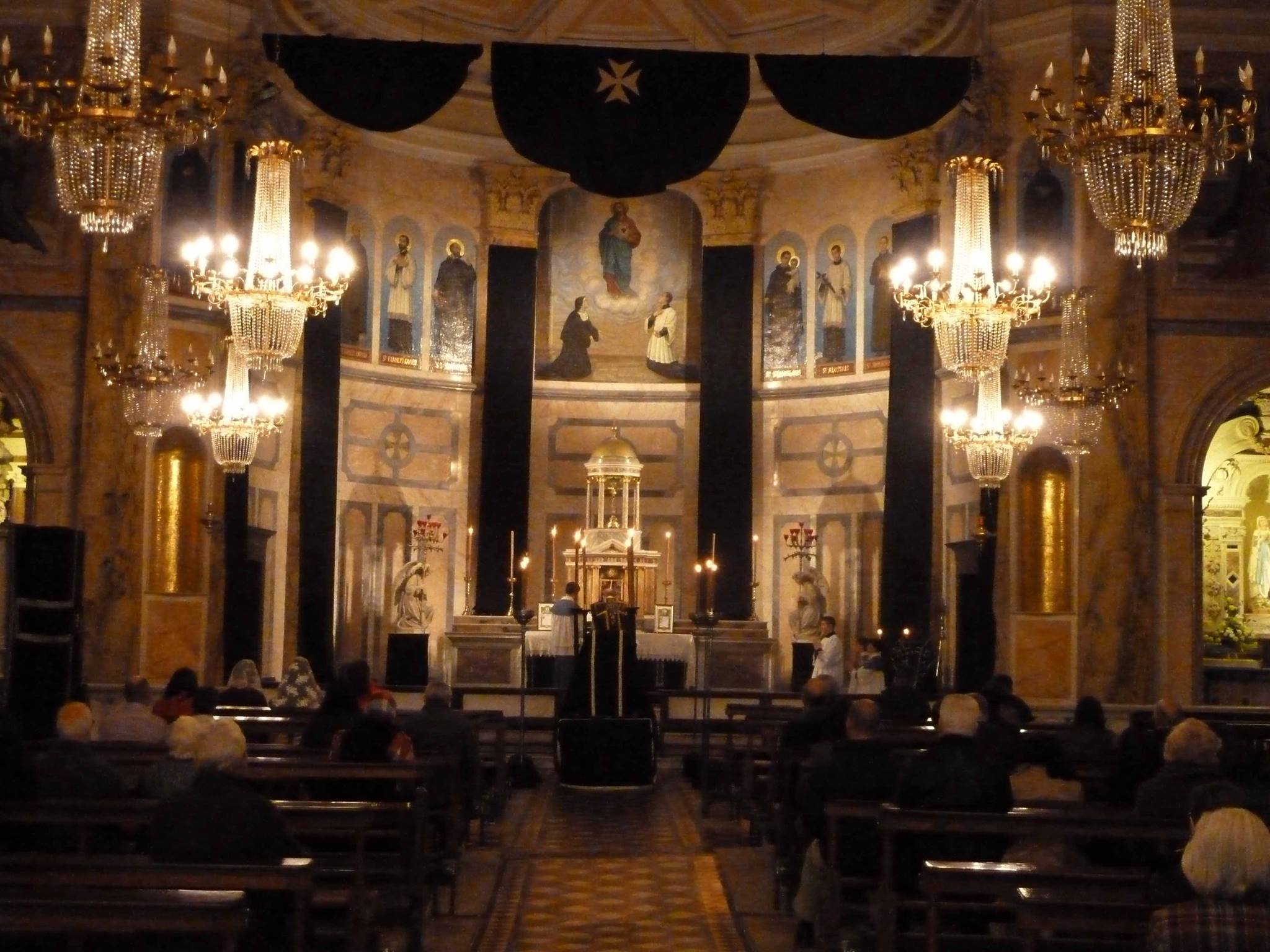





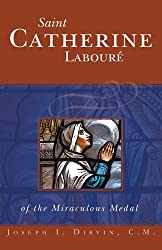


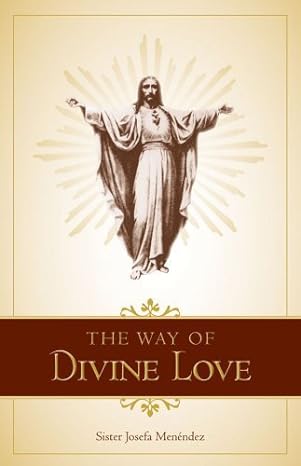


Comments
comments are currently closed
15 responses to “St. Catherine Labouré and Our Lady of the Miraculous Medal”
[…] Our Lady of the Miraculous Medal […]
Considering Communion Medal…
[…] isit to Mgr. de Pradt, Archbishop of Malines, who was in a dying state and sorel […]…
[…] Graphic by dencey (Own work) GFDL (www.gnu.org/copyleft/fdl.html). […]
[…] to this series on Lourdes, the interested reader can also find extracts from Bernard St John on Our Lady of the Miraculous Medal, as well as La Salette (in a series starting here) and Our Lady of Pontmain (in a series starting […]
[…] to this series on Lourdes, the interested reader can also find extracts from Bernard St John on Our Lady of the Miraculous Medal, as well as La Salette (in a series starting here) and Our Lady of Pontmain (in a series […]
[…] to this series on Lourdes, the interested reader can also find extracts from Bernard St John on Our Lady of the Miraculous Medal, as well as La Salette (in a series starting here) and Our Lady of Pontmain (in a series […]
[…] to this series on Lourdes, the interested reader can also find extracts from Bernard St John on Our Lady of the Miraculous Medal, as well as La Salette (in a series starting here) and Our Lady of Pontmain (in a series […]
[…] to this series on Lourdes, the interested reader can also find extracts from Bernard St John on Our Lady of the Miraculous Medal, as well as La Salette (in a series starting here) and Our Lady of Pontmain (in a series […]
[…] to this series on Lourdes, the interested reader can also find extracts from Bernard St John on Our Lady of the Miraculous Medal, as well as La Salette (in a series starting here) and Our Lady of Pontmain (in a series […]
[…] note that the reader can find further accounts from Bernard St John at this site regarding the 1830 Apparition of the Miraculous Medal (here), as well as serialised accounts concerning Our Lady of La Salette in 1846 (starting here), Our Lady […]
[…] respond to the crisis which started in France by appearing repeatedly in Nineteenth Century France: in Paris, in the Rue du Bac (1830) on the holy mountain of La Salette in 1846, to the child Bernadette at Lourdes (1858), to the […]
[…] is the story of St. Catherine Labouré – St. Catherine Labouré who beheld the Blessed Virgin in the Rue du Bac in Paris of […]
[…] to this series on Lourdes, the interested reader can also find extracts from Bernard St John on Our Lady of the Miraculous Medal, as well as La Salette (in a series starting here) and Our Lady of Pontmain (in a series […]
[…] to this series on Lourdes, the interested reader can also find extracts from Bernard St John on Our Lady of the Miraculous Medal, as well as La Salette (in a series starting here) and Our Lady of Pontmain (in a series […]
Beautiful! Thank you again for this post! I wear my grandmothers miraculous medal on my scapular, but never knew all this background! God Bless and protect you 🙂
[…] Then, just two years before the publication of Pope Gregory’s encyclical and only one year before Dom Guéranger first conceived of acquiring Solesmes and reviving the Order of St. Benedict in France, there took place in the chapel of the motherhouse of the Sisters of Charity in the rue du Bac in Paris the series of apparitions wherein Our Lady revealed to St. Catherine Laboure the design of the Miraculous Medal. […]
I have at home this medal..but now, after I read it ..I want to wear it..Thank you
Very happy, Lia, to have encouraged you in this. I have worn mine for many, many years now and am certain that I owe many, many graces to this – far more I imagine than I will ever know in this life.
Is it possible to purchase either a digital or paper copy of the image of Our Lady displayed above? I would like to create a presentation of the picture for my parish in West Chester, Pa. Thank you, Jim
Jim, I regret to say I do know where a copy can be found. The internet is awash with low-resolution images, of course, but you would need a high -resolution and at the moment I have no idea where you would find such. If I find out, I will tell you.
St Catherine Laboure And The Miraculous Medal
[…] . Resolved to try at once its efficacy in a spiritual sense, he armed himself wi […]
St Catherine Laboure And The Miraculous
[…] Mgr. de Pradt, Archbishop of Malines, who was in a dying state and sorely in ne […]
St Catherine Laboure And The Miraculous
[…] a visit to Mgr. de Pradt, Archbishop of Malines, who was in a dying state and so […]